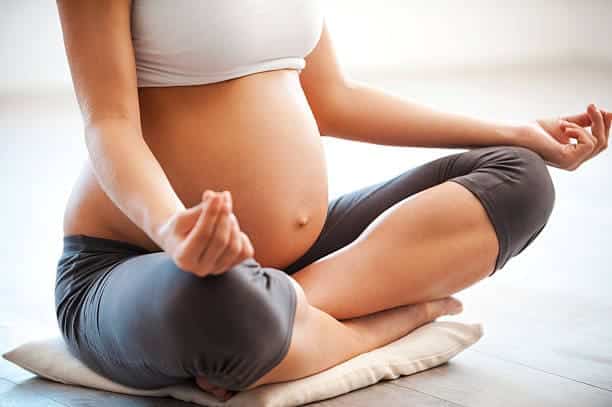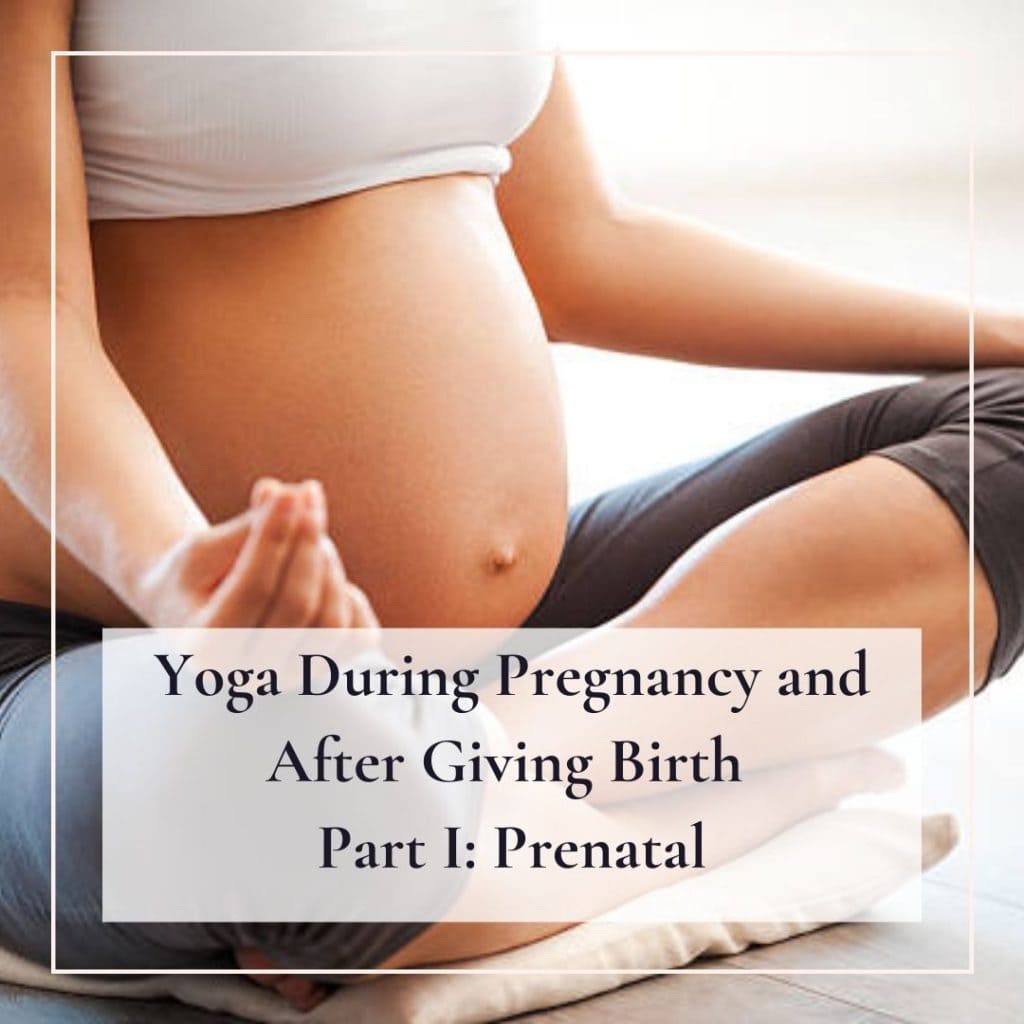How Can a Woman Support Her Body and Mind During Pregnancy and How Much Is Too Much?
After having completed my online teacher training as a certified pre- and postnatal yoga teacher (at the amazing and well experienced Bliss Baby Yoga School in Australia) I am exited to share my knowledge in theory as in practice.
I invite all the beautiful Mamas and ‘Mamas-to-be’ to read more about my thoughts and the benefits of Yoga during pregnancy and after giving birth in this article and I’m looking forward to welcome you in one of my classes
I am also very grateful for the learnings and the experience I’ve gained by already working with wonderful mamas-to-be in different stages of their pregnancy. It is truly amazing to be part of these journeys.

Yoga During Pregnancy - Prenatal
Yoga is so much more than only physical exercises to build strength and to gain flexibility. When it comes to yoga during pregnancy and postpartum, this understanding of Yoga reaches a whole new level.
A woman’s body is changing and with that her physical & mental, especially emotional condition. In order to that her practice needs to change accordingly. Pregnancy is not the time, where a woman should focus on bringing her physical condition (strength or flexibility) on a higher level – it is the time to show compassion towards oneself and to support the body the best way possible.
Yoga Can Help With a Various List of Benefits
The benefits of yoga during pregnancy are truly amazing and can support a woman in order to work with her body and her energy rather than against it. By using props like cushions, yoga blocks, blankets and straps all of the positions are easy to adjust for each woman individually.
1. Promotes relaxation and overall well-being
A pregnant woman often feels tired, stressed and needs a lot of rest. A lot of times anxiety and fear arises. A calming and well-rounded practice is great for the nervous system and balances the hormonal system. It can increase Serotonin and Dopamine for more general joy in life and the energy levels get recharged.
Yoga can help:
- to decrease anxiety, fear and stress.
- to relax, to calm down the mind.
- to boost Serotonin and Dopamine
- to recharge the energy levels
Tools: restorative poses, guided meditations and breathing exercises.
2. Improves physical condition and prepares the body for labour
Even though pregnancy is not the time to level up the physical condition it is still important to work on strengthening important muscle groups, in order to minimize pain in the body and to prepare the body as best as possible for the challenges of labour.
Due to the growing belly, growing breast and often additional weight gain the body of a pregnant woman has to hold more weight. The weight distribution is pulling a woman into a higher arch in the lower back, which often leads to back pain, overly tight hip muscles and quadrizeps.
The right exercises can help:
- to handle the weight better and to decrease common aches in the neck, the back, the hips and the legs.
- to prepare the body for labour in terms of strength and stamina (especially in active birth position – to be able to hold an active birth position).
- to tone the deep birth muscles (deep transversus abdominis, uterus walls, pelvic floor) for more support during pregnancy, during labour and faster a recovery postpartum.
- to improve posture, balance and coordination.
- to alleviate muscle cramps, constipation, swelling legs and ankles (because of fluid retention).
- to promote better circulation and can reduce high blood pressure.
- to relax the pelvic floor in order to prepare for labour.
- the body to become juicy and soft (flexible and agile) to reduce pains and to prepare for labour.
Tools: strengthening exercises, stretching exercises, pelvic floor toning, breathing exercises
3. Improves mental and emotional condition and prepares the mind for labour
As mentioned in #1 the mental and emotional stage is changing due to a hormone cocktail in the body. The woman experiences mood changes, often feels vulnerable and emotional.
Yoga can help:
- to balance the hormones.
- to strengthen the mind – “you are stronger than you think” (e.g., holding a pose longer than to the point where the natural thought of “I can’t hold any longer” kicks in – you can’t just stop during labour either)
- to become more flexible in the mind
- to stay focused and in the present moment
- to stay aware and conscious
- to deal with unwanted circumstances and challenges that arises (e.g., in a worst-case scenario during labour, it is crucial that the woman stays calm and relaxed rather than falling into panic
- to increase the overall emotional wellbeing so that the woman can enjoy the journey of pregnancy in a healthy mental stage which is so important for the mum and for the growing baby.
Tools: Breathing exercises, guided meditations, visualisations
4. Empowers a woman in her power
Not only the body of a woman is changing – her energy is transforming as well. She becomes stronger in her feminine power. She becomes a loving mother.
Yoga can help:
- to feel powerful, to trust oneself and one’s strength.
- to awaken her full power and potential as a mother.
- to learn to be able to speak for yourself and to be able to communicate what you need and you want or not.
- to honour this sacred time, her body and to cultivate self-love during this whole process.
- the woman to feel her body better, to tune in even better with the baby’s energy.
- to learn to surrender and to adjust in the best way you can in any challenges you are facing, without the need of judging.
- to learn to listen to your own intuition – what’s good for the mother is good for the baby.
During pregnancy teh body, mind and also the energy of a women is changing.
Since change can be hard on some points it is more important then ever to be compassionate with oneself.
Often the Question Arises: How Much Is Too Much?
First golden rule: do not overstretch, strain or compress the belly – just leave the womb and allow it to become soft.
Second golden rule: listen to your intuition – you know what’s best for you. If something doesn’t feel right – leave it, if it feels great – go for it.
Be careful with deep stretching/ overstretching:
Due to the hormone Relaxin the body is already getting soft on its own. Too deep stretching can lead to overstretched muscles, ligament, tendons and joints, which can lead to less support and weakness in the body, especially in the pelvis floor. This can cause incontinence (especially postpartum) and aching hips or pain in the lower back.
Still important: supporting the softening of the body in gentle stretches (See #2)
Be careful with over strengthening:
As already mentioned, the woman’s energy is changing and so does her practice.
How much you can work out during pregnancy, is of course a question of how much you did before. The other question which arises is – is there a need to work out like before? If the body feels tired, sore or weak – why should you force yourself through a workout? (This also refers to non-pregnant women!)
During pregnancy the body becomes softer in order to allow the baby to grow. The abdominal muscles, especially the 6-pack muscles, are opening in order to give space for the baby. Their function is changing. By toning these muscles, you would actually work against nature.
Still important: maintaining strength and stamina to support the body with the additional weight it is carrying. (See #2)
Thanks for taking the time to read – let me know in the comments your thoughts and experiences.
And always remember the Golden Rules of Yoga during pregnancy.
Comming next: Yoga During Pregnancy and After Giving Birth – Part II: Postnatal
How can I support my body to recover after giving birth and when can I start again?
How can I include a Yoga practice in my new daily routines? (I don’t have time…)







No comment yet, add your voice below!